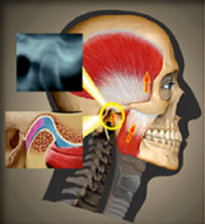“The Most Important Thing You Can Do For Your Patient is to
Make the Correct Diagnosis. It is the Foundation For Success”
Jeffery P. Okeson, DMD
The key to understanding Temporomandibular Disorders is to realize that they present along a broad continuum, from relatively minor muscular conditions to very complex disorders involving intracapsular mechanical dysfunction, usually combined with significant muscular involvement.
Whatever a given patients’ presenting condition may be, to provide a proper diagnosis, it must be described in specific biologic terms. In other words, the term “TMJ” is too generic a term, is not biologically-specific and tells us nothing about the nature of the patient’s condition that may need treatment.
For decades the dental profession has used the phrase “TMJ Pain/Dysfunction”, having historically thought of these conditions primarily in terms the pain component. The dysfunction has seemed to be of secondary importance. However, although pain may be what will cause the patient to seek treatment, the underlying cause of the pain is often the dysfunction. It is crucial to recognize that the pain is usually not the actual problem but simply an expression of the underlying problem. Identifying the problem that is causing the pain is essential to determining a biologically-specific diagnosis. Based on an understanding of the underlying problem will enable development of a definitive treatment for the actual condition, the dysfunction of the musculoskeletal structures, that may be causing the pain.
Our understanding of these conditions, in their broadest sense, is reflected in the definition of TMJ disorders provided by Dr. Weldon Bell — “Pain and/or dysfunction of the masticatory musculoskeletal structures”. If we appreciate that true TMDs involve musculoskeletal structures, we can better understand how significantly they vary from other types of orofacial pain, such as neurovascular or neuropathic pain. Often the source of neurovascular and neuropathic pain cannot be treated directly, and symptomatic relief may be the best that can be achieved. However, with musculoskeletal pain, anywhere in the body, the underlying condition producing the pain can frequently be directly and successfully addressed. When this can be accomplished, the likelihood of chronic recurrences of the pain can be significantly reduced.
Treatment based on an accurate and biologically-specific diagnosis can be more definitive and is much more likely to lead to true rehabilitation of the underlying condition. For this reason, being able to identify the nature of the underlying problems in specific biologic terms in each individual patient is a critical first step toward achieving successful treatment. See TMD Diagnostic Categories.

